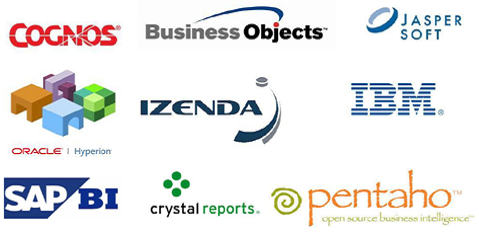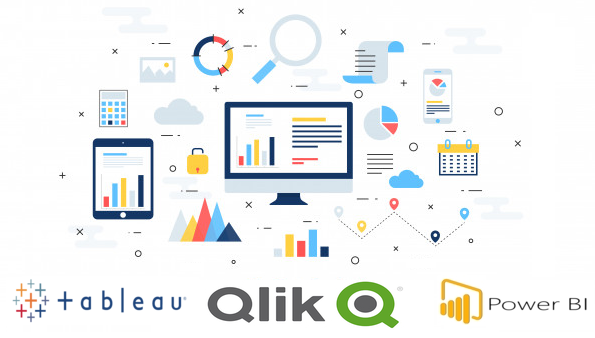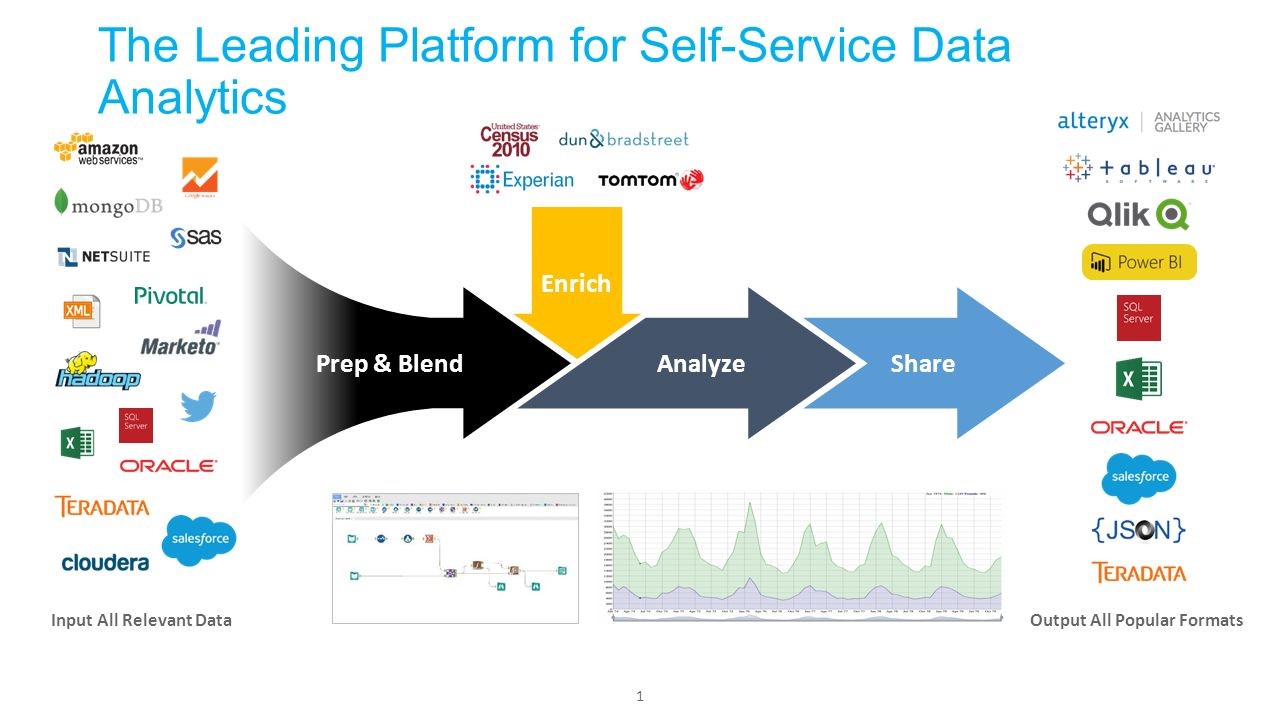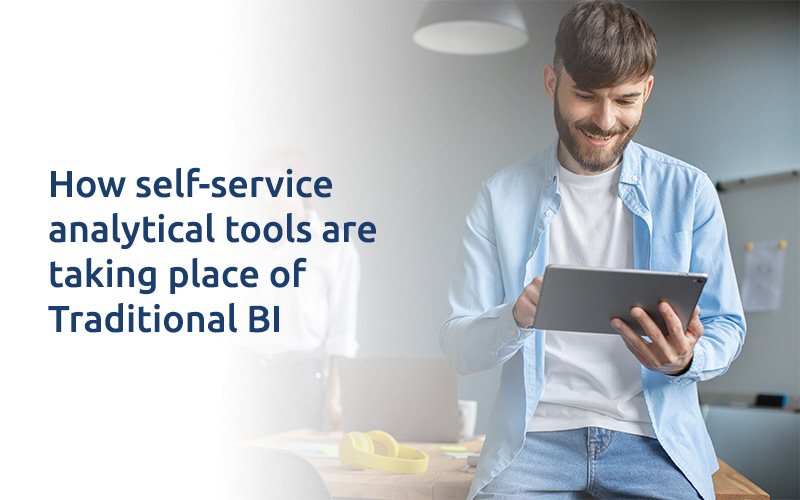
How self-service analytical tools are taking place of Traditional BI
In the world of Business Intelligence, it’s all about the business user these days. Forget about those old tools that only data scientists or the IT experts could use: In today’s fast-paced business growing environment, who can afford to take years or months to prepare the reports?
The future is moving towards self-service, data discovery and quick insights tools which are powering intelligence with intelligent business.
Gartner placed self-service data discovery tools designed for end users firmly in the forefront of the leaders in magic Quadrant of 2018 for Business Intelligence and Analytics platforms. New self-service, data discovery tools do not replace enterprise BI, but rather augment those enterprise BI tools and, in many cases, improve upon certain aspects.
Data visualization BI specialist Tableau which is a market leader from last six years again held the top position and it was noted that many of the “traditional” vendors were racing rapidly to catch up by producing their own user-friendly BI tools that minimize IT involvement.
The facilities within the Business intelligence environment enabled its users to become more self-reliant and less dependent on the IT service industries. These facilities focus on following main objectives:
- Easier access to data sources for reporting and analysis.
- Easier and improved support for data analysis features.
- Faster deployment options such as cloud computing.
- Simpler, customizable, and collaborative end-user interfaces.
Self Service BI is user-driven BI Solutions, leveraging many of the strengths of the mobile and web technologies. As the name implies, Self Service BI solutions are designed to adapt frequently the changing business needs. One of the objectives of Self Service BI is to give users the data they require to make quick insights into business decisions instantly. Examples of Self-Service Business Intelligence solutions include Tableau, Qlikview and Power BI.
Short comes from Traditional BI Tools
- Architecture designed for traditional BI was based on hardware limitation like limit memory, CPU which was very scared.
- Specialized consultants must be utilized to perform ETL tasks and set up the Data Warehouses that few decision-makers will use.
- Traditional BI tools cannot exploit In-Memory, Multi-Thread, Multi-Core computing. Dimensions are decided at the time of designing the structure.
- Creating reports is time-consuming and also places a burden on IT for small changes.
Features of Traditional BI tools:
- Enterprise BI systems are scalable for large volumes of data.
- Average response time remains consistent even for large volumes of data.
- Organizations can benefit from use cases on historical data & build reports upon it.
- Enterprise BI solutions can benefit organizations that are seeking for highly scalable, centralized, standardized reporting with guided analysis.

Power Of Self Service Analytics BI Tools:

In-memory is useful when used with Advanced Technologies like using Memory instead of Disk for any operation.
Associative Search: It is a simplified search tool embedded in analytics which allows users to search and interact with their business intelligence data in the same way they think – associatively. Users can instantly see connections and relationships between data residing in different applications, systems, organizations, and regions, all by themselves. It helps people find data using the keywords that make sense to them. They can explore data knowing only associated facts — they can find data even when they don’t know the data structure or syntax.
The productivity of self-service analytics: In Analytics, Self-service BI solutions are equipped with blending functionalities increasing productivity by decreasing long turnaround times often found when there is a need to go through multiple business departments such as IT operations.
Cost Efficiency: Self Service BI’s upfront cost of ownership is significantly less than Traditional BI’s costs. Even the total cost of changes are more feasible for organizations to switch is comparatively low than Traditional BI making it.
Scalability: In today’s analytic market Self-service BI tools are not just for the big players in the industry-specific business anymore. Using self-service analytics, BI becomes more affordable and available for smaller companies. BI solutions were historically the domain of larger enterprises – mainly due to skill-sets, time and cost required implementing, but today it’s being used by businesses of all sizes.
Predictability: Statistical Analysis, Linear Modeling, Predictive analytics, Descriptive Analytics is playing a pivotal role in business operations today. The ability to perform real-time “what-if” analytics creates a self- sufficient, informed workforce.
With Business Intelligence tools, business analysts are able to access the real-time data which required at different levels and quickly generate results with no need for working on spreadsheets and no any technical expertise required. Often, no coding skills are required and even the reports can be sliced and diced as required without the use of Excel Pivots or any other methods of aggregation in SQL. Self Service BI tools have a short development life- cycle that requires less data discovery and also less IT resources and is quicker to deliver as well as easy to deploy on multiple platforms and devices as compared to Traditional BI. For example, reports can be accessed through smart-phones and tablets.

Self Service BI tools are easy to adapt and much more flexible to use. Current business demand is for tools which:
- Are user-friendly
- Are more insightful
- Are more interactive
- Allow users at different levels to access not just structured data sources, but also non-traditional ones like social media networks for analytics.
However, Self-service BI may not be as scalable as traditional BI. The days when there was no other choice it made sense to invest in these tools, but in today’s world, things have changed.
